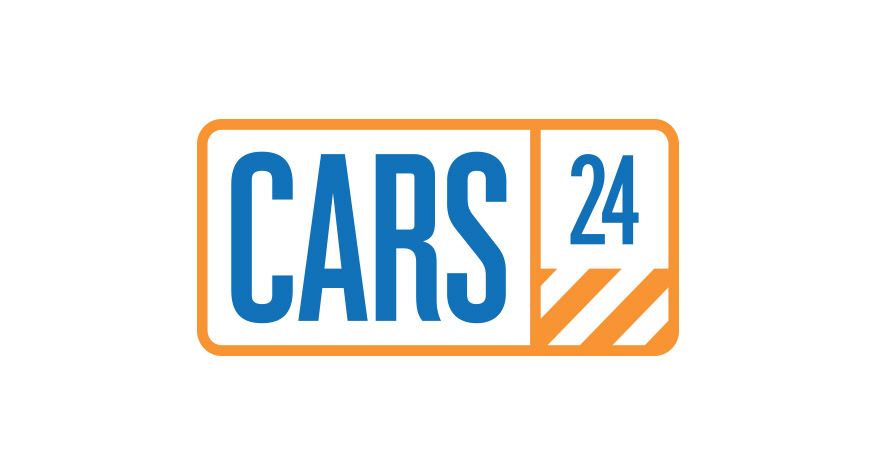Commodity Money: Definition, Examples & Characteristics
Economists use the word “fiat,” which in Latin means “let it be done,” to describe money that has no intrinsic value. Organizations can only do what they are designed and equipped to do. The conventional dichotomy of “commodity” and “fiat” base monies overlooks a third possibility that shares some features of each. This third type, which I call “synthetic commodity money,” resembles fiat money in having no nonmonetary value; but it resembles commodity money in being not just contingently but absolutely scarce. Representative money is a certificate or token that can be exchanged for the underlying commodity. For example, instead of carrying the gold commodity money with you, the gold might have been kept in a bank vault and you might carry a paper certificate that represents-or was “backed”-by the gold in the vault.
That is to say, the supply must be able to react to increasing demand. So when the economy starts to grow; the commodity must be able to supplied and represent the new goods in the market. Gold or other metals are sometimes used in a price system as a durable, easily warehoused store of value . The most important feature of fiat currency remains its stability, unlike commodity monies such as gold, silver, and copper. As mentioned earlier, the rise of fiat currencies came about as countries attempted to smooth out the business cycles and avoid the busts of credit cycles. Back in the day of the gold reserve, they printed money out of a valuable physical commodity such as gold, silver, or paper money they could redeem for a set amount of the gold or silver.
What you’ll learn:
Even if nobody would accept it, the owner could use it for their purposes. So if someone went to market with a pound of tobacco and nobody would accept it, they would be able to smoke it instead. How Fed Economic Stimulus Works and Its Effect on the Economy The central bank of America is the Federal Reserve, and the Fed has the responsibility of deciding how much money there is in the economy…. The Covid-19 pandemic has exposed the flaws in our current fiat monetary system by forcing the Federal Reserve to open its piggy bank and pour out all the money it can to keep the country and economy afloat. Slower Growth – fiat monies promote faster economic growth, and because of the nature of the ability to manipulate quicker, they can provide liquidity to stimulate faster economic growth.
- As long as the money’s value springs from the material from which it is comprised and not some arbitrary decree of a ruler or government representative, it is in fact hard money.
- Unlike commodity and representative money, fiat money is not backed by other commodities such as silver or gold, but its creditworthiness comes from the government recognizing it as money.
- Another way that commodity money sees inflation is through the debasement of the currency.
- Stably is a venture capital-backed FinTech startup from Seattle , with a focus on providing asset tokenization and stablecoin infrastructure.
Commodity money is money that has intrinsic value, meaning that it has value even if it is not used as money. Examples of commodity money include precious metals, foodstuffs, and even cigarettes. Its origin traces back to ancient days when people stopped relying on the bartering system to conduct trades. What prompted people to use commodity money was the fact that it is primarily characterized as intrinsically valuable, which means that it has multiple use cases.
Pros of Commodity Money
Generally, the value of commodities is less volatile, but there is always the risk that they may lose value. For example, gold is a valuable commodity, but the price of gold can decrease or increase with time. Thus, the risk of volatility always exists with commodity money.
Is Bitcoin a commodity money?
In 2015, the U.S. Commodities Trading Future Commission (CFTC) defined bitcoin and other virtual currencies as commodities under the U.S. Commodity Exchange Act.
For example, gold was used as money, but also in the manufacturing of jewellery. The use of barter-like methods using commodity money may date back to at least 100,000 years ago. Trading in red ochre is attested in Swaziland, shell jewellery in the form of strung beads also dates back to this period, and had the basic attributes needed of commodity money. To organize production and to distribute goods and services among their populations, before market economies existed, people relied on tradition, top-down command, or community cooperation.
Commodity Money
When this is a persistent problem, commodity money.s often attack the problem by taking that currency unit out of circulation. Fiat money is a government-issued currency that is not backed by a physical commodity, such as gold or silver. Eventually, many governments no longer backed fiat currency, and the money increasingly took on a value based on public confidence. As of 1933, U.S. citizens could no longer exchange currency with the U.S. government for gold. Backing a fiat currency with a commodity provides more stability and encourages confidence in the financial system. Anyone could take backed fiat currency to the issuing government and exchange it for a certain amount of the commodity.
What are the 7 commodities?
Estimating the Role of Seven Commodities in Agriculture-Linked Deforestation: Oil Palm, Soy, Cattle, Wood Fiber, Cocoa, Coffee, and Rubber.
However, for convenience, Hudson’s Bay post managers exchanged made beaver coins, which were stamped pieces of copper or brass. Examples of commodities that have been used as media of exchange include gold, GAL silver, copper, salt, peppercorns, tea, decorated belts, shells, alcohol, cigarettes, silk, candy, nails, cocoa beans, cowries and barley. Several types of commodity money were sometimes used together, with fixed relative values, in various commodity valuation or price system economies. The increase in the creation of money and the impacts has led to increased interest in cryptocurrencies as an alternative to fiat currencies. But Bitcoin has some of the same strengths and weaknesses as commodity and fiat money. It is only as valuable as people believe it is and has a finite value, such as a commodity.
Usually, in a fiat money the value drops if the coin is converted to metal, but in a few cases the value of metals in fiat moneys have been allowed to rise to values larger than the face value of the coin. In India, for example fiat Rupees disappeared from the market after 2007 when their content of stainless steel became larger than the fiat or face value of the coins. In the US, the metal in pennies (97.5% zinc since 1982, 95% copper in 1982 and before) and nickels (75% copper, 25% nickel) has a value close to, and sometimes exceeding, the fiat face value of the coin. Unlike commodity monies, fiat currencies allow the central banks to print or hold money as they see fit to help control the money supply, inflation, interest rates, and liquidity. The success of alternative payment systems has led to discussion of various proposals to replace money with a new technology-based system, though many lack a clear idea of what exactly is the “money” they seek to replace.
- •Unlike other forms of synthetic commodity money, Bitcoin has a positive, albeit declining, growth rate.
- In this case, the government issues fiat money, such as the U.S. government.
- Unlike commodity monies, fiat currencies allow the central banks to print or hold money as they see fit to help control the money supply, inflation, interest rates, and liquidity.
- When products like bread and cows had to be exchanged, it became hard to calculate the trade, making it unpractical.
- Where metal coins are used as an officially recognized currency, the government will set a fixed value for each type of coin.
It was understood that the certificate could be redeemed for gold at any time. Also, the certificate was easier and safer to carry than the actual gold. Over time people grew to trust the paper certificates as much as the gold. Representative money led to the use of fiat money-the type used in modern economies today. M1, the narrowest definition of the money supply, includes assets that are perfectly liquid. M2 provides a broader measure of the money supply and includes somewhat less liquid assets.
Frequently Asked Questions about Types of Money
Trustees are regulated financial professionals who manage assets, while custodians arrange for secure holding, whether themselves or through third parties. Trusts are audited by third parties, and in an additional layer of protection, tokens are issued on a public blockchain that’s transparent, unhackable and automatically preserves immutable audit trails. The tokens issued represent a legal claim on the trust’s contents — ownership in a certain sum of gold. Citizens who must pay rent and bills will be forced to go deeper into personal debt again, where they can.
If your $55,000-worth kilo of gold is in an ETF, you have to redeem it against its cash value, then spend the cash — accumulating service, conversion and other fees en route. If it’s in a gold-backed digital asset, you just spend the token. It is important to know how the concept of commodity money came into existence and also about the usage of commodity money in ancient and medieval times. Commodity money was in use for thousands of years, in times when the barter system still prevailed before any other form of money or currency came into circulation. Goods perceived to be of equal value were exchanged between the buyer and seller. For example, a pound of sugar was exchanged for an amount of coffee.
That means it has value in and of itself, with people trading it freely in the knowledge that someone will accept it. China began as the first company to use fiat currency around 1000 AD, and as recently as 1971, when Richard Nixon took the U.S. off the gold standard. The number one advantage of commodity money equals the ability to serve more than one purpose. For example, gold can become jewelry and also used as wiring in computers.
One main reason for that is the transportation of these goods that will serve as a medium of exchange. Imagine how hard it is to move gold worth millions of dollars around the world. It is pretty costly to arrange the logistics and transportation of large bars of gold.
such as Bitcoin and Ethereum.
Commodity money has intrinsic value but can be difficult to transport and secure, while digital currencies are decentralized and offer greater privacy but can be volatile in value.’
— ivanferrari.eth 🦇🔊 🏴 (@ferrarivarese) February 23, 2023
Numerous commodities in various times and places have been effectively utilized as this form of tired and true currency. Besides gold and silver, peoples, nations, and empires have employed salt, chocolate beans, copper, decorative belts, shells, cigarettes, and even large stones. Critics have argued that many of these forms LINK https://www.beaxy.com/ of currency were prone to spoilage or gradual deterioration. Commodity money has been used throughout history as a medium of economic exchange.
The question has to be examined as to why people attribute value to modern fiat money while it holds no value in itself. Considering a variety of economic theories, the answer to this lies in the system as a whole. Fiat money does not have value because it can be used to create jewelry like gold can.
When – and why – did people first start using money? – The Edwardsville Intelligencer
When – and why – did people first start using money?.
Posted: Fri, 03 Mar 2023 13:15:59 GMT [source]



















